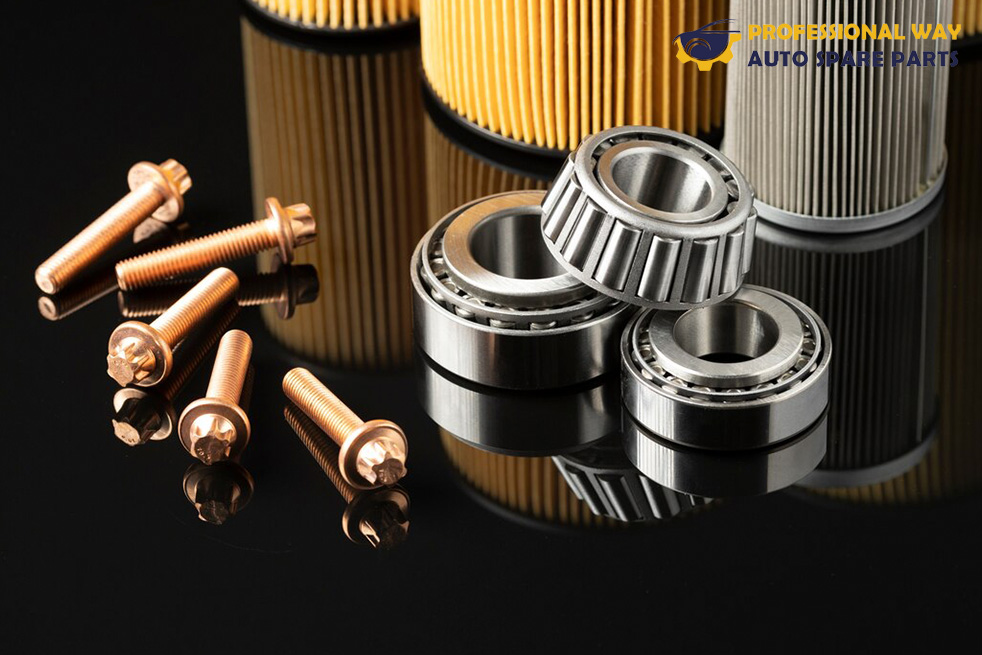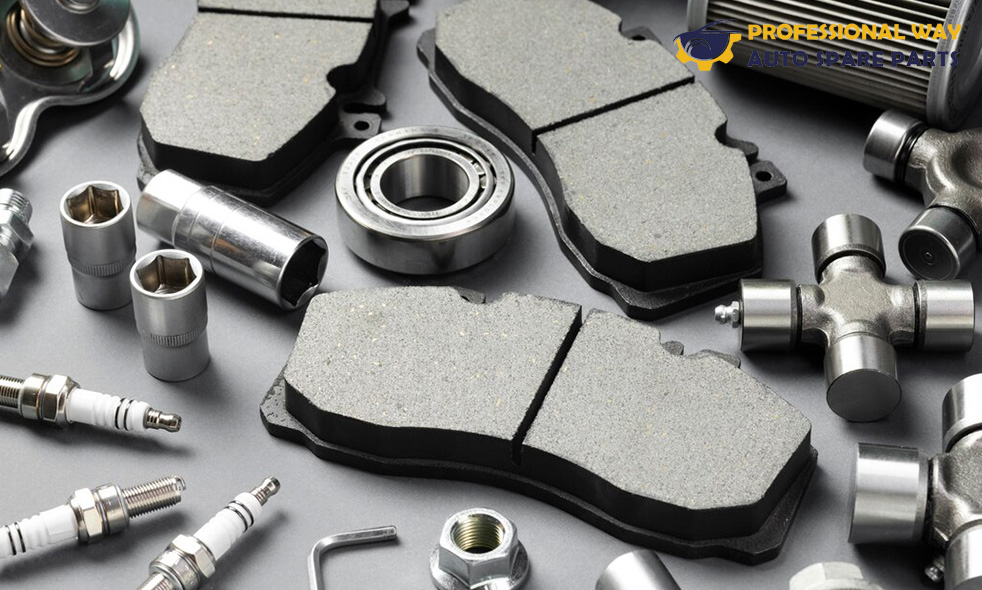Finding real car spare parts online is sometimes intimidating. Countless sellers offering products that look the same make it hard to differentiate between authentic and inauthentic. Buying counterfeit parts wastes your money, but worse, they might betray the efficiency as well as the safety of your car. If you’re looking for car spare parts online, the difference lies in knowing what to look for and what not to do. Here is what you must know.
Check the Seller’s Reputation
A good seller usually offers authentic merchandise. Hunt for established online shops or original brand sites. Check customer reviews about whether previous buyers have gotten counterfeit parts. A reliable seller usually shows manufacturer certification or authorised dealer credentials. Avoid new sellers who don’t even have any credible feedback.
Online marketplaces sometimes host multiple sellers, which makes it harder to track authenticity. Choose verified sellers on these platforms and look for labels like “authorised dealer” or “trusted seller.” Genuine sellers typically have transparent business details and clear contact information.
Look for Manufacturer Labels
Genuine parts usually come with clear manufacturer branding and serial numbers. Check the packaging for accurate logos, barcodes, and holograms. Compare the branding with official images from the manufacturer’s website. Poor-quality printing or spelling mistakes are red flags.
Pay attention to the holographic stickers often placed on genuine parts. These stickers are difficult to replicate. If the sticker looks faded or tampered with, question the authenticity of the product.
Verify Part Numbers
Each genuine spare part has a unique part number assigned by the manufacturer. Cross-check this number with the official catalogue on the brand’s website. For example, if you’re looking for Suzuki spare parts in Dubai and UAE verify the part number on Suzuki’s official portal.
Some online sellers may list multiple parts with identical part numbers—a sign of counterfeit products. Always ensure that the part number matches the specific make and model of your vehicle. Double-check compatibility to avoid performance issues.
Inspect the Product Photos Carefully
High-quality photos can give you hints about the part’s authenticity. Genuine parts often have distinct design features, which might be missing in fakes. Compare photos from the seller’s site with reference images on the manufacturer’s official platform.
Try to get close-up photos with the brand, part numbers, and designs. When sellers only present general photos, demand more specific pictures or return them to your wallet. Legit vendors are more honest about a product’s specifics.
Examine Pricing
If an offer seems almost too good, then it’s. Legitimate components have generally equal prices between approved vendors. The price can be much less than the usual price in the market, possibly implying a product counterfeit.
Compare prices from several trusted sources. Although minor differences are expected, highly discounted prices may indicate low-quality or counterfeit components. Keep in mind that genuine parts pay for themselves over time by avoiding expensive repairs.
Review Return and Warranty Policies
Reputable vendors usually offer warranty coverage as well as lenient return policies for authentic parts. When a seller does not provide returns or warranty, that should alert you. Always read the return policy before ordering.
A warranty means that the manufacturer guarantees the quality of the product. Highly counterfeited parts are rarely covered by a valid warranty. Be wary of sellers who cannot or refuse to provide documentation.
Check Customer Support Availability
Legitimate sellers usually have responsive customer support to answer queries. Reach customer support and ask minute questions about the product. A legitimate seller will readily respond to your question.
Before placing a valid order, check the response time of customer support. Authentic and reliable support teams usually offer further advice about product compatibility and installation procedures. An incomplete support team might be considered a red flag.
Read Product Descriptions Thoroughly
Carefully written product descriptions usually indicate genuine sellers. Look for details such as material composition, compatibility, and technical specifications. If the description seems vague or incomplete, reconsider your purchase.
Descriptions should clearly mention the part’s intended use and compatibility with specific vehicle models. Look for detailed technical specifications. Sellers who invest time in inaccurate descriptions are more likely to offer genuine products.
Avoid Unofficial Marketplaces
While tempting for their low prices, unofficial marketplaces are breeding grounds for counterfeit parts. Stick to reputable e-commerce platforms with stringent seller verification processes.
Authorised online stores often partner directly with manufacturers. These partnerships provide better assurance of authenticity. Avoid purchasing from social media groups or classified ad sites where verification processes are minimal.
Check for OEM and OES Labelling
Original Equipment Manufacturer (OEM) and Original Equipment Supplier (OES) parts are typically genuine. OEM parts come directly from the car manufacturer, while OES parts are from the same supplier but without car brand labelling.
Both types maintain high quality and compatibility standards. Verify the labelling and packaging to differentiate between genuine OEM and aftermarket parts. Be cautious of sellers misrepresenting aftermarket parts as OEM.
Look for Buyer Protection Guarantees

Opt for sellers who provide buyer protection guarantees. These platforms offer refunds if the product turns out to be counterfeit. It adds an extra layer of security to your purchase.
Payment methods also matter. Choose secure payment gateways that offer dispute resolution services. Avoid direct bank transfers or cash payments, which provide no recourse in case of fraud.
Keep an Eye on Packaging Quality
Genuine parts come in high-quality packaging with tamper-proof seals. Counterfeit products often have cheap, flimsy packaging. Check for mismatched colours or fonts.
Examine the packaging for signs of tampering or damage. Authentic parts usually have clean, professional packaging with clear labelling. Poor packaging quality is often an indicator of counterfeit products.
Seek Expert Advice
If you’re unsure about a part’s authenticity, consult a trusted mechanic. They can help you verify the part and assess its quality.
Mechanics often have access to manufacturer resources and can identify subtle differences between genuine and counterfeit parts. Their experience can save you from costly mistakes.
Compare Weights and Materials
Car spare parts online are often made from higher-quality materials, making them heavier and more durable. Counterfeit parts may feel lighter and have a flimsier construction.
If possible, compare the suspected part with a genuine counterpart. Check for differences in weight, texture, and finish. These physical cues can help you identify fakes.
Pay Attention to User Reviews
User reviews provide valuable insights into product authenticity. Look for detailed reviews that mention the part’s fit, performance, and durability.
Be cautious of overly positive or generic reviews. Genuine reviews often provide specific details about the purchasing experience and product quality. Negative reviews highlighting authenticity issues are a red flag.
Conclusion
Finding genuine car spare parts online doesn’t have to be complicated. By staying alert and following these practical tips, you can confidently identify and purchase authentic parts. This ensures your vehicle remains in top condition, providing both performance and safety. Taking a little extra time to research and verify can save you money and headaches down the road. Whether you’re after Suzuki spare parts or components for another brand, diligence pays off.
